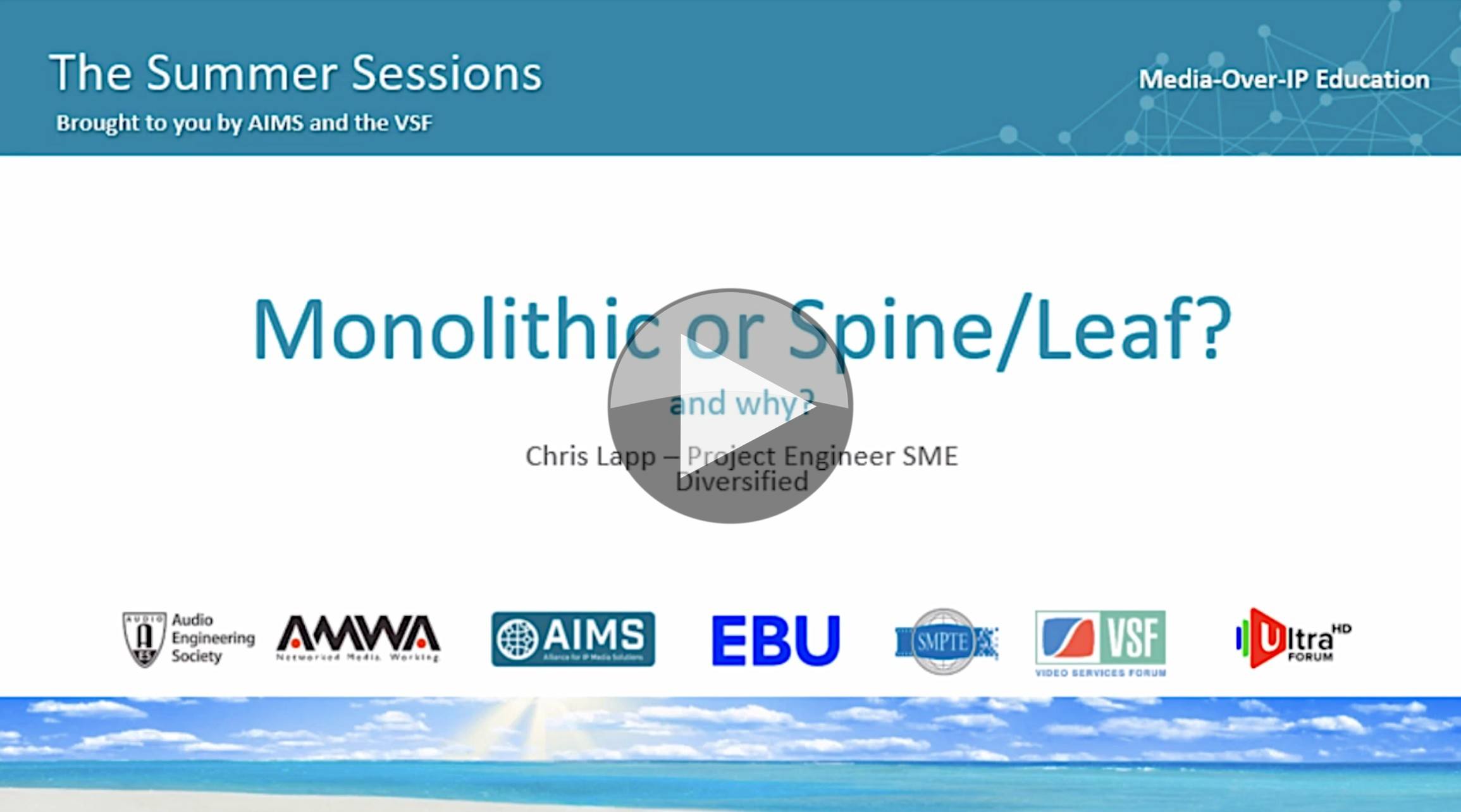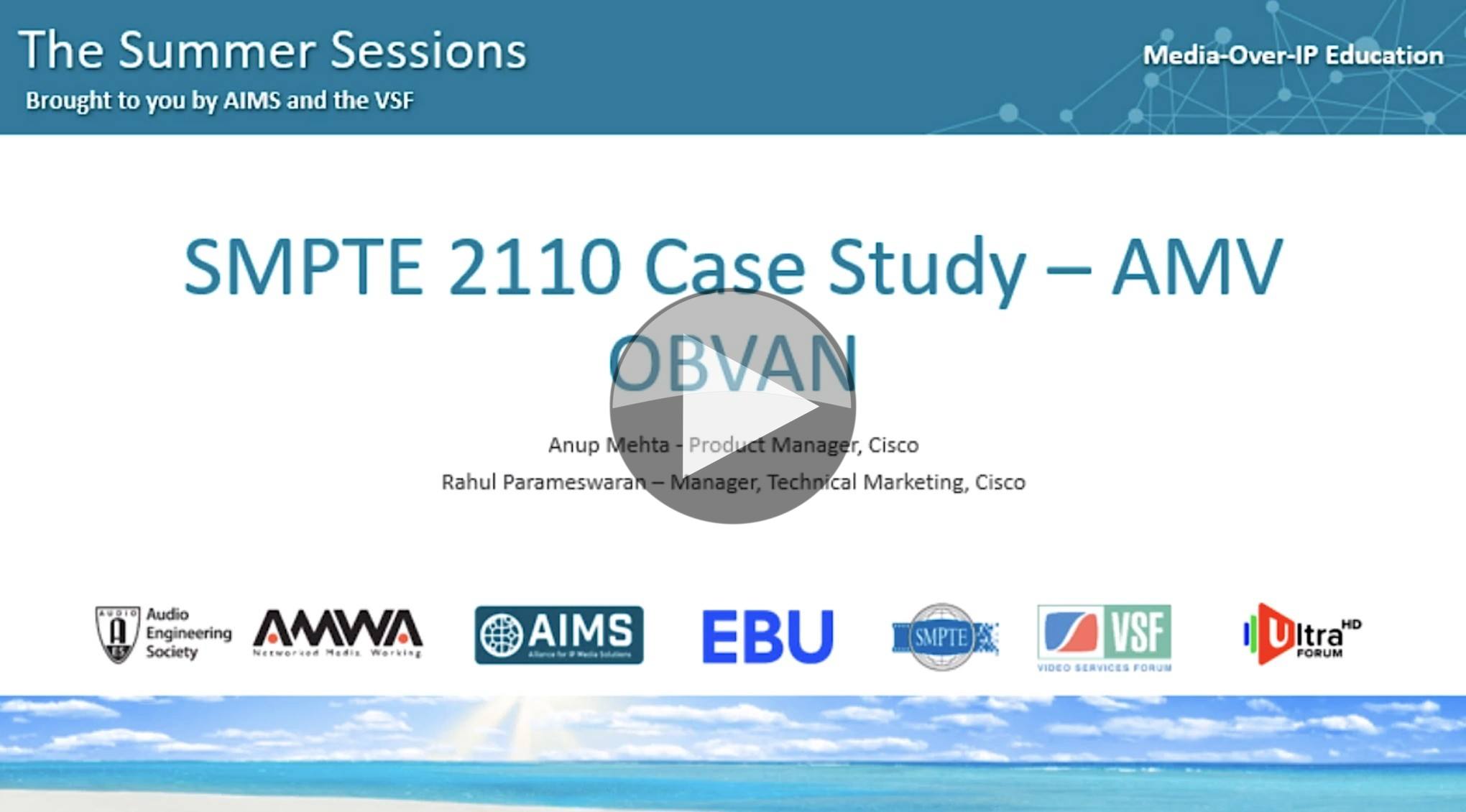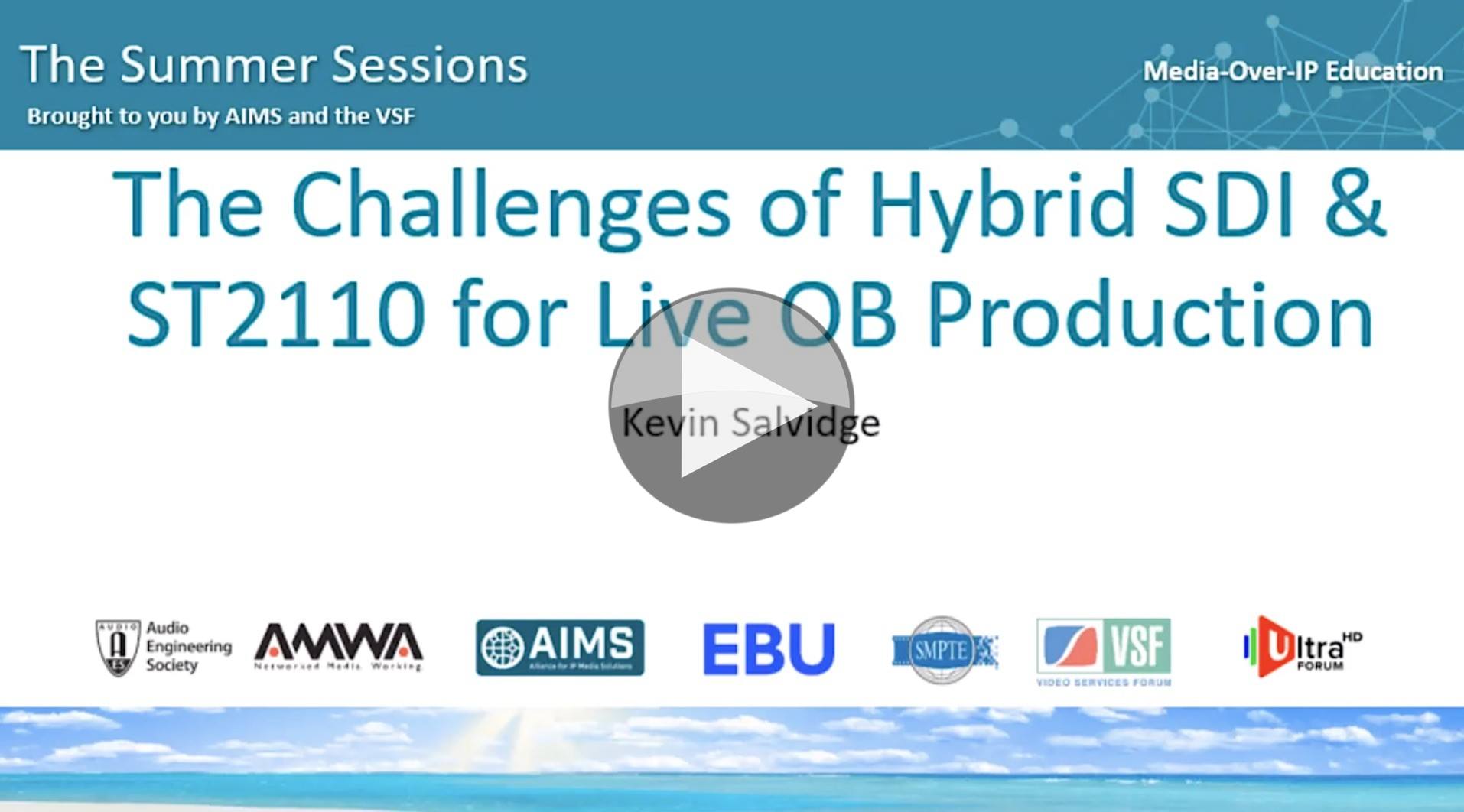It’s hard to talk about SMPTE 2110 system design without hearing the term ‘spine and leaf’. It’s a fundamental decision that needs to be made early on in the project; how many switches will you use and how will they be interconnected? Deciding is not without accepting compromises, so what needs to be considered?
Chris Lapp from Diversified shares his experience in designing such systems. Monolithic design has a single switch at the centre of the network with everything connected directly to it. For redundancy, this is normally complemented by a separate, identical switch providing a second network. For networks which are likely to need to scale, monolithic designs can add a hurdle to expansion once they get full. Also, if there are many ‘low bandwidth’ devices, it may not be cost-effective to attach them. For instance, if your central switch has many 40Gbps ports, it’s a waste to use many to connect to 1Gbps devices such as audio endpoints.
The answer to these problems is spine and leaf. Chris explains that this is more resilient to failure and allows easy scaling whilst retaining a non-blocking network. These improvements come at a price, naturally. Firstly, it does cost more and secondly, there is. added complexity. In a large facility with endpoints spread out, spine and leaf may be the only sensible option. However, Chris explores a cheaper version of spine and leaf often called ‘hub and spoke’ or ‘hybrid’.
If you are interested in this topic, listen to last week’s video from Arista’s Gerard Philips which talked in more detail about network design covering the pros and cons of spine and leaf, control using IGMP and SDN, PTP design amongst other topics. Read more here.
Watch now!
Speakers
 |
Chris Lapp Project Engineer, SME Routing Diversified |
 |
Wes Simpson President, Telcom Product Consulting Owner, LearnIPVideo.com |










